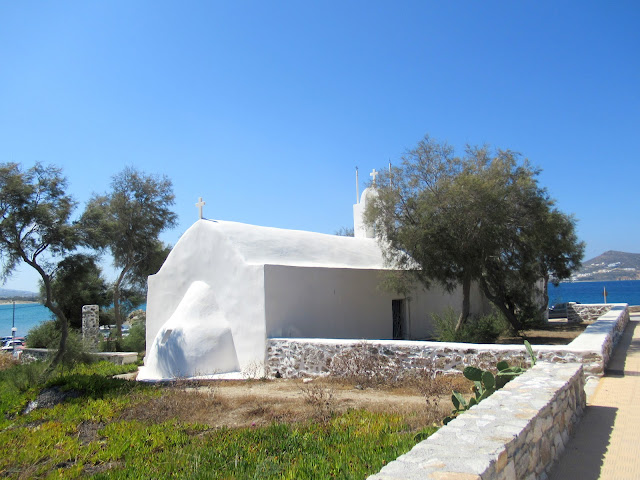As our boat approached the harbour of the Hora (Hora in Greek means town and is often used to denominate the capital of an island) in Naxos we could see the town laid out in front of us
with its white-washed houses
the medieval castle above the town
and Portara, Naxos' most popular landmark, Portara which lies on the neighbouring Palatia Islet and is connected with the Hora by a causeway. It's the marble gate of an unfinished ancient Greek temple dedicated to Apollo.
And here it is, the beach where we swam most days
and one of the tavernas by the beach: we ate here one day after swimming but preferred the one next to it.
The rest of that first morning we explored the old town which will be the subject of a different post.
The town really comes to life at night when everyone comes to the waterfront,
to walk,
to go to bars or restaurants
or to sit on a bench and people watch (or look at one's phone in some cases).
The whole place is buzzing with life and it is very exciting. The later it gets, the busier it gets.
and then there were the boys (at least 6 of them) who were busking with their violins, classical pieces quite often. They intrigued me: they are what? 13 or 14 and it was their age, their number and ... the whole thing really, I found it unusual.
There was the old sailor who sold shells
and of course, the children: babies, toddlers, pre-schoolers, children of all ages, running about, playing, screaming - no baby sitters here, children go where the parents go, at all times, at any time, even the early hours of the morning.
We loved the whole drama of it, the noise, the crowds, the bustle, the sheer numbers of people enjoying themselves and when we needed a break we walked a few yards and looked at the boats in the harbour

There is the small church perched on an islet in the middle of the harbour
The shops were open way past midnight. We had a look in this one that sells local produce
wines, spirits and liquers
Jams, chutneys, Turkish delight and amygdalota, a sweet made out of almond paste
raki and liquers made out of
the waves pounding on the rocks below the district of Grotta

A museum dedicated to theatre director and producer Iakovos Kabanellis
This town is so alive!













































No comments:
Post a Comment